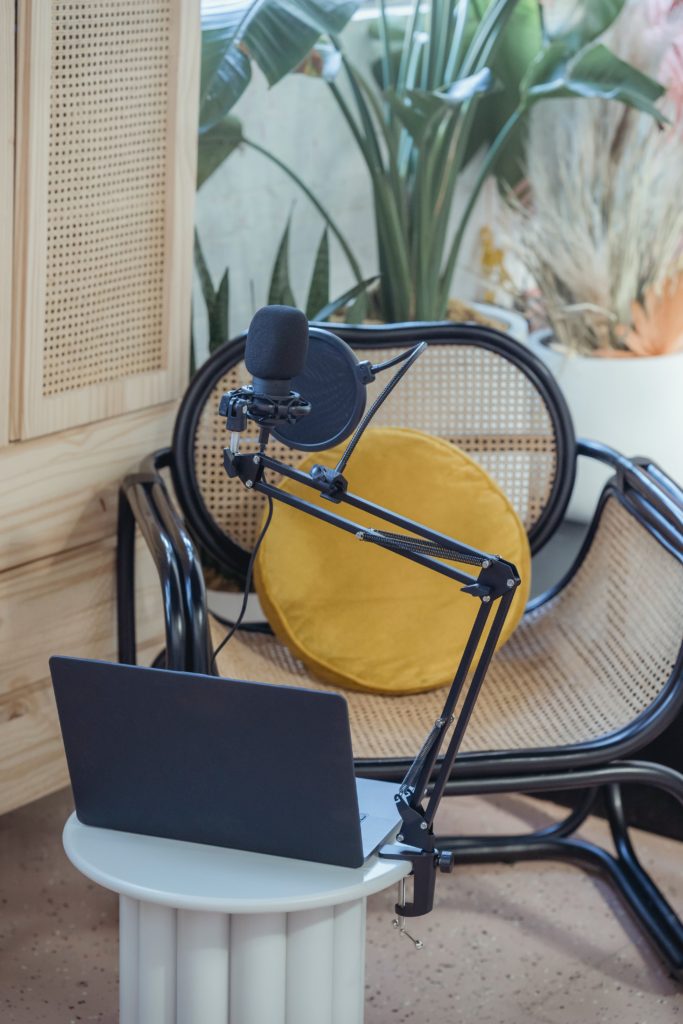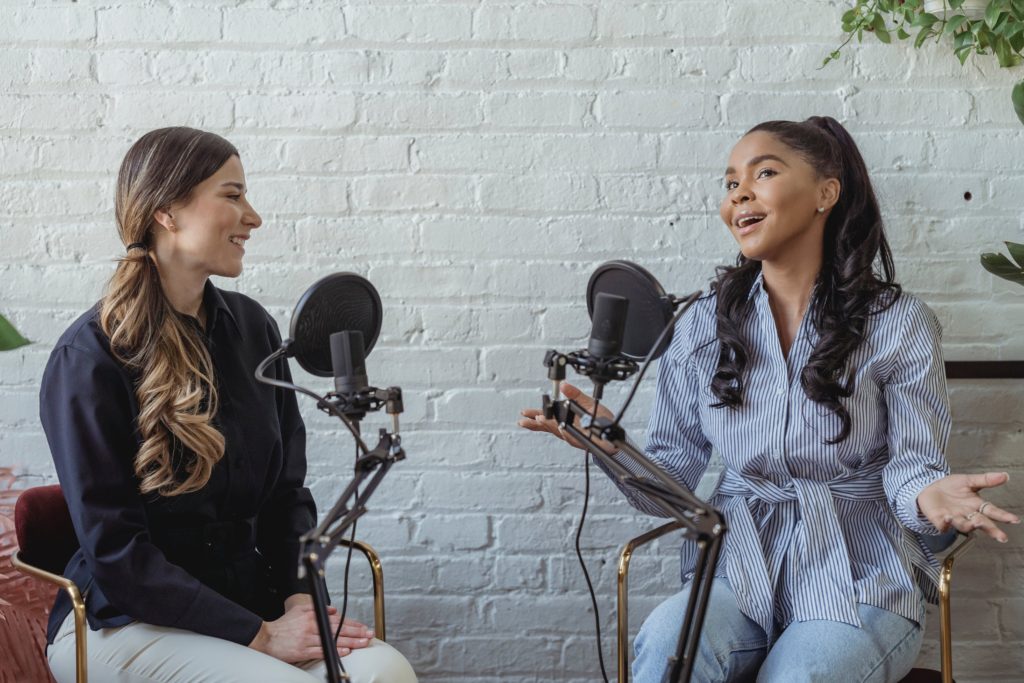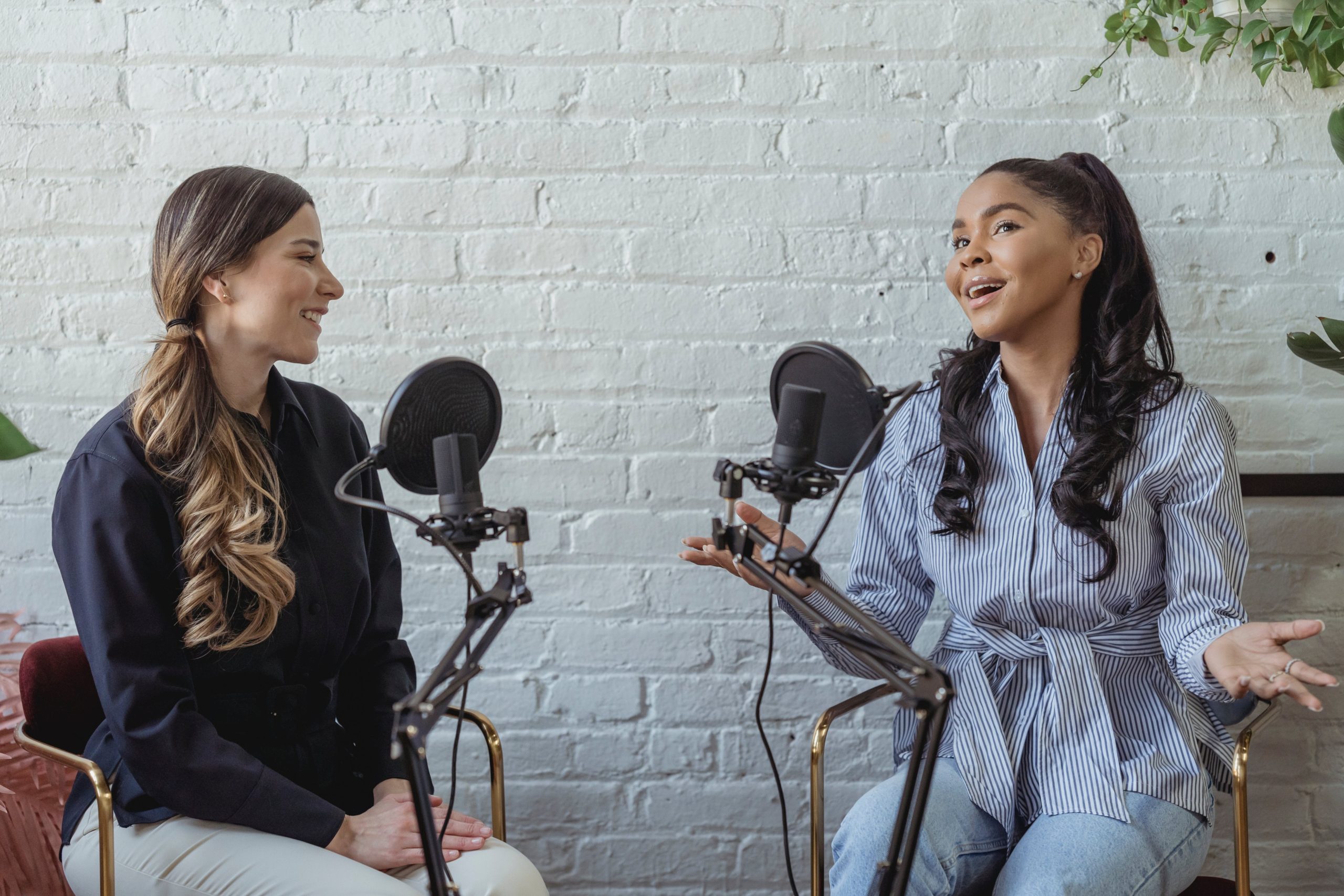Looking to improve the sound quality of your podcast? Look no further! In this article, we will provide you with valuable tips on how to edit your podcast for top-notch sound. Whether you’re a beginner or seasoned podcaster, these tips will help you enhance the audio experience for your listeners. We’ll cover everything from the best microphones and studio monitors to editing software and tools. So get ready to take your podcast to the next level with these expert tips on editing for quality sound.

Understanding the Importance of Sound Quality in Podcasting
Podcasting has become an increasingly popular medium for sharing information and entertainment. With millions of podcasts available, it’s important to make your show stand out from the crowd. While content is king, one aspect that is often overlooked but plays a crucial role in the success of your podcast is sound quality.
Why sound quality matters
Imagine you’re listening to a podcast, and the audio is muffled, full of background noise, or inconsistent in volume. It becomes distracting and frustrating, making it difficult to concentrate on the content being discussed. This is why sound quality matters – it directly impacts the listener experience.
Impact of poor sound quality on listener experience
Poor sound quality can quickly turn potential listeners away from your podcast. It creates a barrier between you and your audience, making it challenging for them to engage with your content. Background noise, echoes, or static can be irritating distractions that take away from the value of your podcast’s information. It’s essential to provide your listeners with a clear and professional-sounding audio experience to keep them coming back for more.
Benefits of investing in good sound equipment
Investing in good sound equipment is crucial for ensuring high-quality audio production. While it may require an initial investment, the benefits are worth it. Good sound equipment allows you to capture clear and crisp audio, eliminating unwanted background noise and ensuring your voice is heard with clarity. It enhances the overall production value of your podcast and shows your commitment to delivering a top-notch listening experience. In the long run, this investment can help you attract and retain a larger audience, leading to more engagement and potential monetization opportunities.
Choosing the Right Microphone for Your Podcast
When it comes to podcasting, the microphone you choose has a significant impact on the quality of your sound. Investing in a good microphone is essential, as it is the primary tool used to capture your voice.
Importance of a good microphone
A good microphone ensures that your voice is captured accurately, with clarity and without any unwanted distortion. It minimizes background noise and helps in creating a professional audio experience for your listeners. A poor-quality microphone can result in muffled or inconsistent audio, diminishing the overall quality of your podcast.
Overview of popular podcast microphones
There are several popular podcast microphones available in the market, each with its own unique features and benefits. Some of the well-known options include the Shure SM7B, Blue Yeti, Sennheiser E835, and Heil Sound PR-40. Researching and comparing different microphones can help you find the one that best suits your podcasting needs.
Features to look for in a microphone
When choosing a microphone for your podcast, there are a few key features to consider. Look for a microphone with good noise-canceling capabilities to minimize unwanted background noise. Ensure that it is easy to use and compatible with your recording setup. Consider the microphone’s frequency response and sensitivity to capture your voice accurately. Additionally, it’s essential to choose a microphone that fits within your budget while still providing a high level of quality.

Exploring the Shure SM7B Cardioid Dynamic Microphone
One microphone that has gained widespread popularity among podcasters is the Shure SM7B Cardioid Dynamic Microphone. Let’s take a closer look at its features and benefits.
Features and benefits of the Shure SM7B
The Shure SM7B is known for its exceptional sound quality and versatility. Its cardioid dynamic design helps in isolating your voice, reducing unwanted background noise effectively. The built-in pop filter minimizes plosive sounds, making it perfect for vocal podcasting. The SM7B’s flat, wide-range frequency response captures all the nuances of your voice, giving it a rich and warm quality. Additionally, its sturdy construction ensures durability, making it a long-lasting investment for your podcasting journey.
Why it’s popular among podcasters
The Shure SM7B has become a go-to choice for many podcasters due to its reliability and exceptional sound quality. Its ability to capture clear and professional-sounding audio makes it suitable for a wide range of podcasting styles and environments. From solo podcasters to interview-based shows, the SM7B’s versatility ensures consistent performance across different recording scenarios.
Tips for getting the best sound quality with the Shure SM7B
To get the best sound quality with the Shure SM7B, it’s essential to follow a few tips during setup and recording. First, make sure to position the microphone properly, adjusting its distance and angle to optimize sound capture. Using a shock mount can help reduce vibrations and handling noise. Experiment with microphone gain and placement to find the ideal settings for your voice. Lastly, consider using a pop filter or windscreen to minimize any unwanted plosive sounds. Taking these steps will help you maximize the potential of the Shure SM7B and deliver outstanding sound quality in your podcast episodes.
Utilizing Boom Arms and Sound Isolation Shields
Boom arms and sound isolation shields are additional tools that can greatly enhance your podcast sound quality. Let’s explore how they contribute to a better audio experience for your listeners.
Benefits of using a boom arm
A boom arm is a flexible stand that holds your microphone and allows you to position it precisely where you need it. It eliminates the need for a traditional microphone stand, which can sometimes clutter your recording space. Using a boom arm improves ergonomics and helps maintain a consistent microphone position. It also minimizes vibrations and handling noise, resulting in cleaner audio recordings.
How a sound isolation shield enhances sound quality
A sound isolation shield, also known as a reflection filter or vocal booth, is a panel that surrounds your microphone. It deflects and absorbs unwanted sound reflections, reducing echo and reverberation in your recordings. Using a sound isolation shield can create a more controlled and focused sound environment, resulting in clearer, more professional-sounding audio. It particularly helps when recording in untreated or reflective rooms, where echo and background noise may be more prominent.
Suggested products: Rode PSA1 Swivel Mount Studio Microphone Boom Arm, Neewer Professional Studio Recording Microphone Isolation Shield
When it comes to boom arms, the Rode PSA1 Swivel Mount Studio Microphone Boom Arm is a popular choice among podcasters. It offers flexibility and ease of use, allowing you to position your microphone exactly where you need it. The Neewer Professional Studio Recording Microphone Isolation Shield is an excellent option for improving sound isolation. Its compact design effectively blocks unwanted reflections, enhancing the clarity of your recordings.

Audio Interfaces and Mixers for Better Sound Control
Audio interfaces and mixers play a significant role in podcasting by providing better sound control and connectivity options. Let’s explore how they can improve your podcast recording experience.
Understanding the role of an audio interface
An audio interface is a piece of hardware that connects your microphone or other audio sources to your computer. It converts analog audio signals into a digital format that can be processed and recorded by your recording software. In podcasting, an audio interface allows for better sound quality and more control over recording levels. It typically offers features such as gain control, headphone outputs, and phantom power for condenser microphones.
How mixers improve podcast recording
Mixers, on the other hand, go beyond the functions of an audio interface. They allow you to connect multiple audio sources, such as microphones, instruments, and external sound effects, and adjust their individual levels. Mixers enable you to create a more dynamic and polished sound by balancing different audio elements. They also offer additional features like EQ controls, effects processing, and multiple output options.
Product spotlight: Focusrite Scarlett 2i2 (3rd Gen) USB Audio Interface, Behringer Xenyx X1204USB Premium 12-Input Mixer
The Focusrite Scarlett 2i2 (3rd Gen) USB Audio Interface is a popular choice for podcasters due to its reliable performance and excellent sound quality. It provides two microphone preamps, allowing for simultaneous recording of two microphones. The Behringer Xenyx X1204USB Premium 12-Input Mixer offers more advanced features for those looking to have greater control over their sound. With four microphone preamps and various connectivity options, it is a versatile choice for podcasters who need to accommodate multiple audio sources.
Importance of Quality Headphones for Monitoring Sound
Good headphones are essential for monitoring sound during podcast recording and editing. Here’s why every podcaster needs a reliable pair of headphones.
Why every podcaster needs good headphones
Monitoring your audio using headphones is essential to ensure its quality. Good headphones allow you to listen carefully to every detail of your recording, making it easier to identify any issues such as background noise, pops, or inconsistencies in volume. They help you catch and address problems early on, resulting in a better final product. Additionally, headphones provide an immersive listening experience, allowing you to evaluate your podcast’s audio mix and make any necessary adjustments.
Deciding between closed-back and open-back headphones
When choosing headphones, you’ll come across two primary types: closed-back and open-back. Closed-back headphones provide excellent isolation, blocking out external sounds and minimizing sound leakage. They are well-suited for recording and editing in noisy environments. Open-back headphones, on the other hand, offer a more spacious and natural sound, thanks to their open design. They are ideal for critical listening and can provide a more immersive experience. Consider your specific needs and recording environment to determine which type of headphones best suits your podcasting workflow.
Featured products: Audio-Technica ATH-M50x Professional Studio Monitor Headphones, AKG K240 Studio Semi-Open Over-Ear Professional Studio Headphones
The Audio-Technica ATH-M50x Professional Studio Monitor Headphones are highly regarded in the podcasting community. They offer excellent sound quality, comfort, and durability, making them a reliable choice for monitoring and editing. The AKG K240 Studio Semi-Open Over-Ear Professional Studio Headphones provide a more open and detailed sound, making them suitable for critical listening tasks. Both options provide accurate sound reproduction and are trusted by many podcasters around the world.
Choosing a Reliable Podcasting Software
Having the right podcasting software is crucial for editing and producing high-quality episodes. Let’s explore what to look for in great podcasting software and compare popular options.
Key features of great podcasting software
Great podcasting software should provide essential features for recording, editing, and publishing your episodes. Look for features like multi-track editing, noise reduction, and equalization options to enhance your audio. Seamless integration with audio interfaces and editing tools is essential for a smooth workflow. Automatic file management and tagging can also simplify the process of publishing and sharing your podcast. Additionally, a user-friendly interface and robust customer support can make your podcasting journey more enjoyable and productive.
Comparison of popular podcasting software
There are several popular podcasting software options available, each with its own strengths and features. Adobe Audition Podcasting Software is a comprehensive solution that offers advanced audio editing capabilities and seamless integration with other Adobe Creative Cloud apps. Audacity Free Audio Editor and Recorder is a popular free software known for its simplicity and versatility. It provides essential editing tools and supports various audio formats. Both options have a significant user base and are widely used in the podcasting community. Consider their features and your specific requirements to choose the software that aligns best with your podcasting goals.
Deep Dive into Adobe Audition Podcasting Software, Audacity Free Audio Editor and Recorder
Adobe Audition Podcasting Software is a professional-grade tool trusted by many podcasters and audio producers. It provides a range of features, including multi-track editing, noise reduction, and extensive audio effects. With its intuitive interface, you can easily navigate through your podcast’s audio and make precise adjustments. Audition’s seamless integration with other Adobe Creative Cloud apps allows for efficient workflow management and collaboration. While it does come with a subscription cost, its extensive capabilities make it a valuable investment for serious podcasters.
On the other hand, Audacity Free Audio Editor and Recorder offers a free and open-source solution for podcast editing. It may not have all the advanced features of Adobe Audition, but it provides a reliable and user-friendly platform for basic audio editing tasks. Audacity supports a wide range of audio formats and offers features like noise removal and equalization. With its large community of users, you can find plenty of online resources and tutorials to help you get started. Audacity is an excellent option for podcasters on a budget or those looking for a simple editing tool without compromising on quality.
Enhancing Podcast Sound with Audio Leveling and Mastering Tools
Audio leveling and mastering are essential steps to ensure consistent sound quality throughout your podcast episode. Let’s explore their role and the benefits of using tools like Auphonic Audio Leveling and Mastering Tool.
Role of audio leveling and mastering in podcasting
Audio leveling and mastering are post-production techniques used to balance the audio levels and overall sound quality of your podcast. Audio leveling helps to even out volume fluctuations, ensuring a consistent listening experience. Mastering involves applying adjustments to enhance the overall sonic quality and clarity of your podcast. These steps play a crucial role in making your podcast sound polished and professional, minimizing distractions and maximizing the impact of your content.
How Auphonic Audio Leveling and Mastering Tool improves sound quality
Auphonic Audio Leveling and Mastering Tool is a popular software tool used by many podcasters. It automates the audio post-production process, simplifying the task of audio leveling and mastering. Auphonic analyzes your audio and applies intelligent algorithms to adjust volume levels, reduce background noise, and optimize overall sound quality. It saves you time and effort by automating repetitive tasks, allowing you to focus on creating great content. Auphonic’s cloud-based processing also ensures fast and efficient results. By using Auphonic or similar tools, you can enhance the sound quality of your podcast and create a more professional listening experience for your audience.
Devices and Accessories to Aid Podcast Recording
In addition to microphones and headphones, there are several other devices and accessories that can aid in your podcast recording process. Let’s explore some of them.
Use of recording devices like Zoom H6 Handy Recorder
A recording device like the Zoom H6 Handy Recorder can be a valuable tool for podcasters who need to record interviews or conduct on-the-go recording. Its portable design and high-quality audio capture make it suitable for various podcasting scenarios. Whether you’re recording in the field or conducting interviews outside of a studio, a reliable recording device like the Zoom H6 Handy Recorder ensures you capture clear and professional-sounding audio.
Benefits of using an Elgato Stream Deck
The Elgato Stream Deck is a programmable control panel that allows for quick and easy access to various functions and commands on your computer. While primarily designed for live streaming, the Stream Deck can also be a useful tool for podcasters. It enables you to control your recording software, trigger sound effects, adjust audio levels, and even automate repetitive tasks. With customizable buttons and profiles, the Stream Deck provides greater efficiency and flexibility in your podcasting workflow.
Exploiting Canva Graphic Design Tool for podcast aesthetics
While sound quality is crucial, the visual presentation of your podcast is equally important. Canva Graphic Design Tool is a popular online design platform that offers a range of templates and tools for creating eye-catching podcast cover art, social media graphics, and episode thumbnails. With Canva, you can easily design professional-looking visuals that align with your podcast’s brand and attract potential listeners.
Tips and Techniques for Editing Your Podcast
Editing plays a crucial role in making your podcast sound professional and engaging. Here are some tips and techniques to help you edit your podcast effectively.
Steps to follow when editing your podcast
- Import and organize: Start by importing your recorded audio files into your chosen editing software. Organize them into individual tracks or segments for easy editing.
- Remove unwanted noise: Use noise reduction tools or filters to eliminate background noise, pops, clicks, or any other unwanted sounds.
- Trim and edit: Cut out any dead air, mistakes, or irrelevant sections to tighten your podcast’s pacing. Ensure smooth transitions between different parts of your episode.
- Balance audio levels: Adjust volume levels to create consistent audio throughout your podcast. Normalize or compress audio to even out volume fluctuations.
- Add music and sound effects: Enhance your podcast’s atmosphere by adding background music or sound effects. Ensure they complement your content and do not overpower your voice.
- Apply EQ and filters: Use equalization tools to enhance the tone and clarity of your voice. Apply high-pass filters to minimize low-frequency rumble or unwanted background hum.
- Add intros and outros: Incorporate opening and closing segments, including your podcast’s theme music, to create a professional and recognizable podcast identity.
- Review and polish: Listen to your edited podcast multiple times to spot any remaining errors or areas that need improvement. Ensure a smooth and cohesive listening experience.
Common mistakes to avoid
- Over-editing: Avoid excessive editing that removes the human element from your podcast. Minor imperfections can add authenticity and make your podcast feel more relatable.
- Inconsistent audio levels: Pay attention to volume levels throughout your podcast. Inconsistent audio can be distracting and diminish the overall quality of your episode.
- Poor pacing and flow: Maintain a good balance between content and pauses. Ensure a smooth flow by avoiding abrupt transitions or excessive pauses.
- Ignoring quality control: Always review your edited podcast for errors or issues before publishing. Check for any audio glitches, inconsistencies, or jarring edits.
How to make your podcast sound professional
To make your podcast sound professional, focus on the following:
- Sound quality: Invest in good microphones, headphones, and sound equipment to capture and reproduce high-quality audio.
- Editing techniques: Use effective editing techniques to improve pacing, remove distractions, and create a polished final product.
- Consistency: Create a consistent audio experience by balancing volume levels, maintaining a steady pace, and ensuring a cohesive flow throughout your podcast.
- Engaging intros and outros: Craft engaging opening and closing segments to make a lasting impression on your listeners.
- Quality control: Take the time to review and polish your podcast before publishing. Eliminate any errors, inconsistencies, or distractions to maintain a professional standard.
By following these tips and techniques, you can elevate the overall quality of your podcast and create a more engaging listening experience for your audience.
In conclusion, sound quality is a critical aspect of podcasting that should not be overlooked. Investing in good sound equipment, choosing the right microphone, utilizing accessories like boom arms and sound isolation shields, and leveraging audio interfaces and mixers can significantly enhance the quality of your podcast’s sound. Additionally, using quality headphones for monitoring, selecting reliable podcasting software, and utilizing audio leveling and mastering tools further contribute to a professional audio experience. Devices and accessories like recording devices, control panels, and graphic design tools can aid in the podcast recording process and enhance its aesthetics. Finally, by following effective editing techniques, avoiding common mistakes, and focusing on making your podcast sound professional, you can deliver an outstanding podcast that captivates your listeners and sets you apart from the competition.
